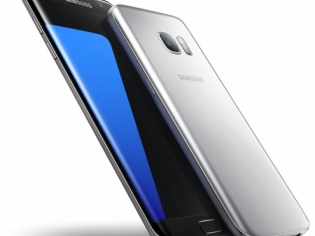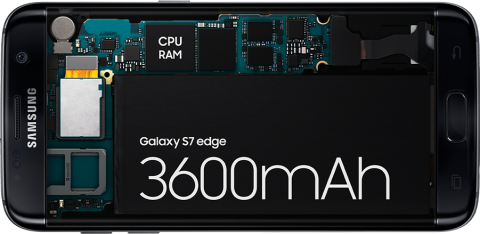-
Lila Ray
23rd Feb 2016
For the most part it looks like LG has outshone Samsung at MWC, or the Mobile World Congress, on right now in Barcelona, Spain. And at this point, Samsung can't really afford to be out-shined by anyone in the mobile world, least of all its old rival, LG.
At the MWC, Samsung unveiled its pair of flagships for 2016, the Galaxy S7 and S7 and S7 Edge. And the big difference between the S7 and its predecessor? Er... Very little. OK, not quite: the camera is even better now. But overall, it’s incremental, so you might wonder if the (likely Rs 50-55k) price will be worth it.
The S6 and S6 Edge were -- or rather, are -- fabulous phones and still so powerful and feature-rich that it's probably not many who will jump to upgrade to the next in the series when the changes are evolutionary rather than revolutionary.
In fact, the current (or old, if you like) Samsung Galaxy S6, for Rs 36,500, is among the best phones out there today across all price categories. It’s got everything you’d want in a phone: nice design, great construction (all-glass back), great camera, fast charge, and wireless charging.
Now LG went and got itself a revolutionary feel because it's put in modules into its G5 smartphone. The idea wasn't theirs, but they seem to have brought it to market.
But none of this means Samsung’s new S7 and S7 Edge are not fabulous phones. Last year, Samsung redesigned how its flagships look and the world went from complaining about cheap plastic to being completely wowed by the glass and metal look of the S6 and its Edge variant. That overall look is retained in the S7 and many may say there's not much you can do to improve it.
But what else do the new S7s have? Well, all the components have been topped up. The 5.1-inch S7 has Qualcomm MSM8996 Snapdragon 820/Exynos 8890 Octa processor, Adreno 530 graphics, 1440 x 2560 pixels (~577 ppi pixel density) AMOLED screen, 4GB RAM and 32GB storage. There's a 3,000mAh non-removable battery, fast-charge, wireless charging, and the micro-SD card slot has made a return.
The 5.5-inch S7 Edge has, of course, the curved sides and even a curve on the back, making it very comfortable to hold and use even with one hand. The Edge has a 3,600mAh battery.
Both new phones have an always-on display, which looks like it's going to be a standard this year for phones. The screen doesn't completely go to sleep but lets you see clock and notifications all the time. Both are now IP68 rated water resistant.
The S7 is a bit smaller than the S6 was, but a bit thicker and heavier at 152g.
The rear camera lens sits more flush than it did on the S6.Oh, What A Camera
Both the S7s now have a 12MP camera and while that may sound like less resolution than the S6’s 16MP, the optics have changed a lot, with a new lens and sensor. Focusing is much faster, so you can grab that shot before the moment is gone, and there's something they call a dual-pixel system and an f1.7 aperture allowing more light and better shots in low light conditions -- which is mostly anytime you're indoors.
That f1.7 aperture lens is spectacular. And the sensor resolution is “down” from 16 to 12 MP to accommodate the bigger 1.4μm pixels of the new Sony sensor that captures way more light--95% more light than the sensor in the Galaxy S6.
One of the most interesting things about the new Galaxy S7 and S7 Edge is a lens attachment, Lens Cover, not unlike the Olo Lens that fits the iPhone. It's made specifically to work with the new flagships.
The Lens Cover is a biggish accessory, which will come on top of the main camera. You obviously can't keep it there all the time, so it'll be something you pull out when you need it or when you decide you want to settle down to some serious phone photography. It'll stick out a bit and make the phone look like a camera, so that's another reason you can't just leave it there.
The additional capability the Lens Cover will bring is a telephoto lens and a fish-eye lens. The two lenses are swappable in the same snap-on cup. And you're ready for creative photography.

The S7 Edge is 5.5" (vs the S7 at 5.1"). Both get the microSD slot back, but without Android Marshmallow's support for treating microSD like internal storage.
In fact, clip-on (or clamp-on) lenses do exist from third party companies such as PhotoJojo but these have tended to be smaller than the new Lens Cover and are not optimized for the optics of any particular phone. While these are interesting, they do have a bit of nuisance value to them as you now have to figure out how to carry the paraphernalia along and so they don't work out for everyday photos. Plus, if you have to carry stuff around, why not just carry an all-round capable camera then?
What these accessories will cost when they arrive in India is anybody's guess.
Lila Ray is a corporate consultant who likes her gadgets almost more than her shoes. Write to her at [email protected]
Samsung's New Flagships, Galaxy S7 and S7 Edge | TechTree.com
Samsung's New Flagships, Galaxy S7 and S7 Edge
No reinvention, but a refinement of what were stunning phones to begin with
News Corner
- DRIFE Begins Operations in Namma Bengaluru
- Sevenaire launches ‘NEPTUNE’ – 24W Portable Speaker with RGB LED Lights
- Inbase launches ‘Urban Q1 Pro’ TWS Earbuds with Smart Touch control in India
- Airtel announces Rs 6000 cashback on purchase of smartphones from leading brands
- 78% of Indians are saving to spend during the festive season and 72% will splurge on gadgets & electronics
- 5 Tips For Buying A TV This Festive Season
- Facebook launches its largest creator education program in India
- 5 educational tech toys for young and aspiring engineers
- Mid-range smartphones emerge as customer favourites this festive season, reveals Amazon survey
- COLORFUL Launches Onebot M24A1 AIO PC for Professionals







TECHTREE